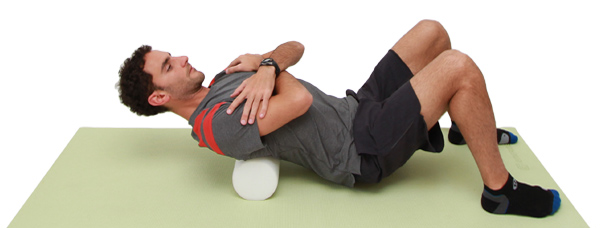How To Use Foam Rollers: Dos and Don’ts
Back aches are often ranked as the most common medical complaint among Americans. Easing the pain can present a complicated procedure of pills, heat, cold, and rest. Certainly, prepping before strenuous activity is important, so stretching, and even Yoga, can be helpful to reduce the chances of aches and pain. In some cases, it helps ease discomfort after it occurs as well. But in addition to the aforementioned methods, high density foam sheets for more comfortable bedding, and rigid foam rollers can also provide avenues to ease back and hip pain. Used when you wake up, before exercising, during a workout, after, or any other time of the day, people who use foam rollers often notice a reduction in discomfort, whether it’s a nagging twinge, recovering from an intense workout, or recuperating from an injury. With this said, there are still a few do’s and don’ts to consider when foam rolling.
Roll Slowly
Rolling more slowly helps you accomplish two things. It gives your muscles time to relax, and helps tender spots feel more compression. If you roll too quickly, you do not allow your body enough time to adjust to the pressure and force. Your brain needs time to tell the muscles to relax, so going too quickly is almost wasting the time you’re spending exercising or working sore areas of your body. Slower rolling also helps to strengthen other muscle areas, as it requires you to hold your body in a consistent position for longer.
Keep Good Posture
To ensure the most improvement of your pain, you need to maintain good posture. Sure, you’re using the roller to help relieve discomfort and work problem areas, but you still need to support your weight with good posture to avoid injury. No matter how you exercise, good posture is important for reducing the risk of injury and maximizing the benefit of your efforts.
Don’t Focus on Just Knots
Sure, ironing out those knots alleviates pain, but it’s good practice to make sure you divide your attention and focus on other areas as well. Why? Spending too much time working on one area can cause bruising and tenderness, slow the recovery from an injury, or even cause a new ache or pain you didn’t have before. Instead, spend about 20-30 seconds on a problem area, then move to other areas of your body.
If you continue to experience pain, foam rollers and exercise mats can help ease tension and improve muscle recovery. Keeping a few things in mind while rolling, like not going too fast, maintaining good posture, and taking a balanced approach to rolling can help you fight aches and pains and feel your best.
Bio: Carlo Badalamenti writes tips for Foam Factory, Inc., including the many ways to use open-cell, closed-cell, and flexible polyurethane foam products.


